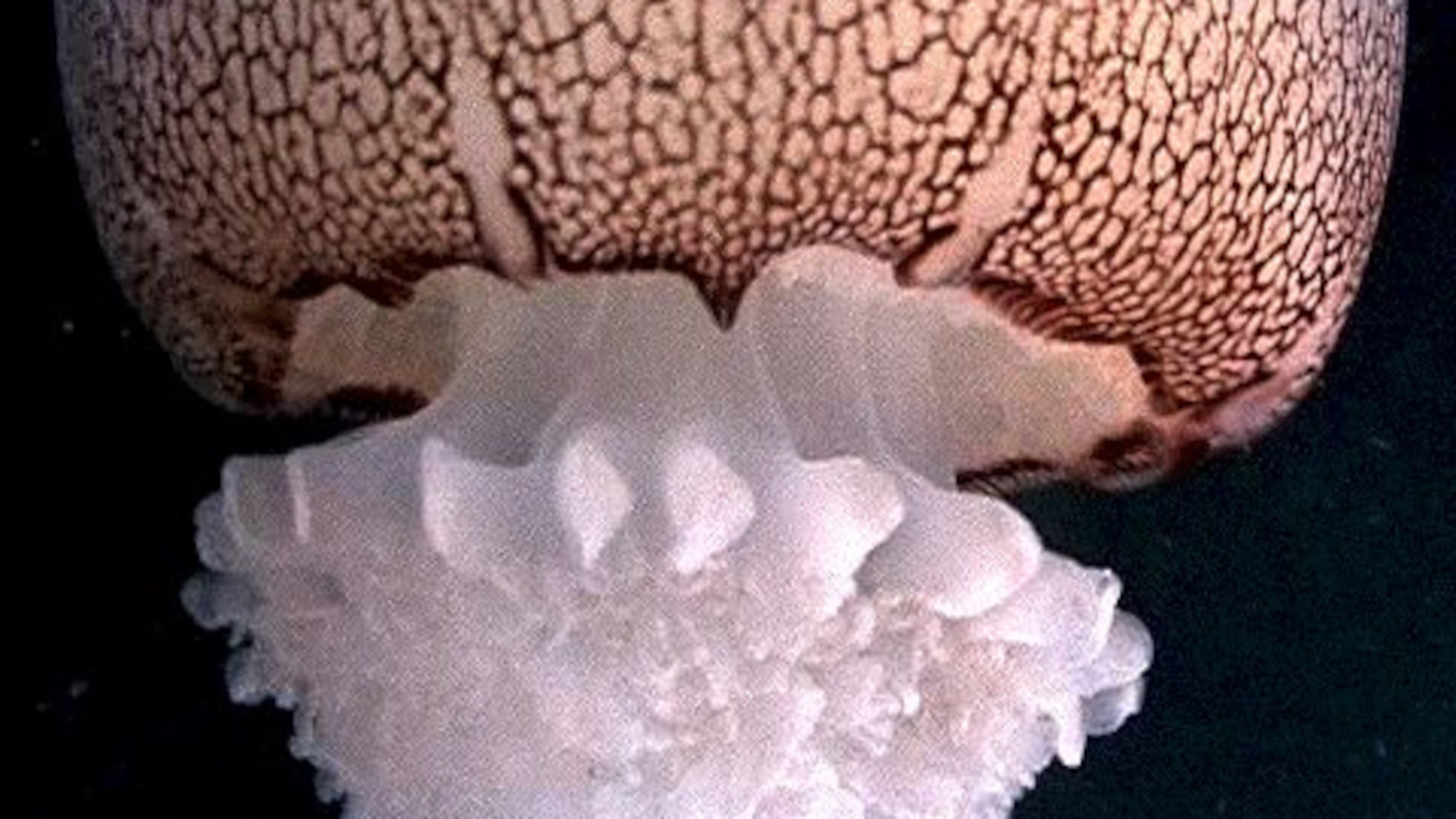August is prime time for beachgoers — and for jellyfish in coastal waters

Jellyfish can be found in every ocean and seacoast in the world. Georgia’s coast is no exception, and August is peak time for the gelatinous creatures that lack brains, hearts, bones and even blood.
In August, ocean waters are at their warmest, which favor jellyfish breeding and migration patterns. Unable to truly swim, the weird, pulsating creatures mostly drift with ocean currents.
Exactly how many jellyfish species occur in Georgia’s coastal waters is not known, but it’s safe to say that many common types occur there — including moon jellies, cannonballs, sea wasps (or sea nettles) and others.
Georgia’s most abundant jellyfish by far is the cannonball, characterized by a firm, round, milky brown “bell” and short chunky arms instead of long, trailing tentacles. They occur year round on the coast, but in summer they may be incredibly plentiful, even making up about 15% of the entire biomass along the coastline. If you walk a beach now, you’re bound to come across their ball-shaped, jelly-like blobs in the sand, washed up there by winds and waves.
Cannonballs, which feed on zooplankton and certain fish eggs and larvae, are a significant food source for loggerhead sea turtles — including young ones like those hatching now on Georgia’s beaches. In recent years, several Georgia shrimpers have turned to fishing for cannonballs, which are processed and shipped to Asia as seafood delicacies.
But unlike the cannonball, another jellyfish also common at this time of year in Georgia’s waters — the sea wasp — is not so harmless. With their clear, box-like bodies and long tentacles, sea wasps can inflict painful stings as hurtful as a bee sting or worse.
It’s not unusual for dozens of sea wasp stings to be reported on a single summer day by beach-goers wading in Georgia’s ocean surf. On one summer day alone three years ago at Tybee Island’s beach, more than 430 sea wasp stings were reported.
Usually, the burning pain from a sting subsides in about 30 minutes. First-aid treatment may include pouring full strength vinegar on the sting.
IN THE SKY: From David Dundee, retired Tellus Science Museum astronomer: The moon will be first quarter on Friday (Aug. 1). Venus and Jupiter rise in the east a few hours before dawn. Mars is low in the west just after dark. Saturn rises in the east just after dark.
Charles Seabrook can be reached at charles.seabrook@yahoo.com.

